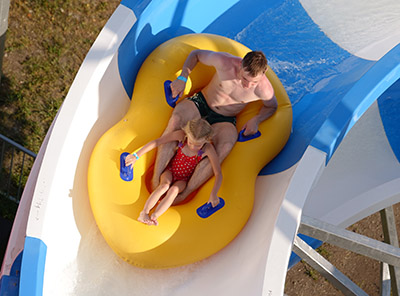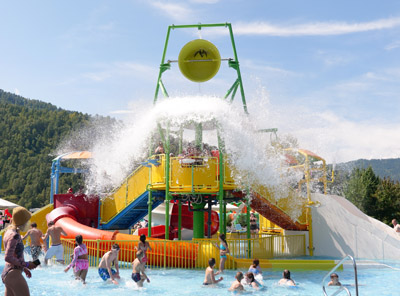Ensuring Rider Safety at Water Parks: Comprehensive Measures for Slide Design and Operation
Water park slides are engineered to deliver thrills while prioritizing rider safety through meticulous design, rigorous maintenance, and clear guidelines. From structural integrity to rider behavior management, every aspect of a slide’s operation is scrutinized to minimize risks. Understanding these measures helps visitors make informed choices and highlights the industry’s commitment to safety.
Structural Engineering and Material Standards
The foundation of slide safety lies in robust engineering and high-quality materials. Slides are constructed using fiberglass-reinforced plastic (FRP) or rotationally molded polyethylene, chosen for their durability, slip resistance, and ability to withstand UV exposure and chemical treatments. These materials are tested for impact resistance to ensure they won’t crack or deform under stress, even after years of heavy use.
Design calculations account for dynamic loads, including the weight of riders, water flow, and environmental forces like wind or earthquakes. Engineers use finite element analysis (FEA) to simulate stress points and identify potential weaknesses in the structure. For example, curves and drops are reinforced with additional support beams to prevent bending, while joints are sealed with waterproof compounds to avoid leaks. Regular inspections verify that materials remain intact, with repairs conducted promptly if wear or damage is detected.
Water Flow Management and Hydraulic Systems
Proper water flow is critical for controlling rider speed and preventing accidents. Slides rely on pumps to maintain a consistent volume of water, which reduces friction and ensures smooth movement. The flow rate is calibrated based on slide length, incline, and rider weight to avoid situations where riders stall or accelerate dangerously. For instance, family slides might use slower flow rates to accommodate children, while extreme slides employ higher volumes for faster descents.
Hydraulic systems include backup pumps and automatic shut-off valves to handle emergencies. If a pump fails, the backup activates within seconds to prevent water loss and rider stranding. Sensors monitor water pressure and temperature, triggering alerts if deviations occur. Additionally, slides are designed with gradual slopes near exits to slow riders naturally, reducing the need for abrupt stops that could cause collisions or injuries.
Rider Eligibility and Behavior Guidelines
Safety begins with ensuring riders are physically capable of navigating the slide. Parks enforce height, weight, and health restrictions to exclude individuals who might struggle with the ride’s demands. For example, slides with steep drops may require riders to be at least 1.2 meters tall to maintain control during descent. Pregnant women, people with heart conditions, or those with neck/back injuries are often advised against riding certain slides to prevent exacerbation of existing health issues.
Clear signage and staff instructions guide riders on proper posture and behavior. Common rules include lying flat on back for speed slides, keeping arms and legs inside the slide at all times, and waiting for the previous rider to exit before starting. Parks train attendants to spot unsafe actions, such as standing up mid-ride or attempting to stop abruptly, and intervene quickly to correct them. Educational videos or brochures may also be provided to reinforce these guidelines before riders enter the queue.
Emergency Protocols and Staff Training
Despite preventive measures, emergencies can occur, requiring well-prepared staff and clear protocols. Slides are equipped with emergency stop buttons that halt water flow and rider movement instantly. These are strategically placed at launch points, exits, and control rooms for quick access. Lifeguards or slide attendants undergo regular training in first aid, CPR, and evacuation procedures, ensuring they can respond to incidents like rider distress, equipment malfunctions, or severe weather.
Evacuation plans are tailored to each slide’s design. For enclosed tubes, attendants may use intercom systems to communicate with trapped riders and guide them to safety. Open slides often have secondary access ladders or platforms for rescuers to reach stranded individuals. Drills simulate scenarios like power outages or rider injuries, helping teams practice coordination and efficiency. Parks also maintain partnerships with local emergency services to ensure rapid response if professional medical assistance is needed.
Maintenance and Inspection Routines
Daily, weekly, and seasonal maintenance schedules keep slides in optimal condition. Before opening each day, staff inspect surfaces for cracks, debris, or vandalism that could harm riders. They check water quality to ensure chlorine levels and pH balance meet health standards, preventing slips caused by algae or bacterial growth. Lubricants are applied to moving parts, such as gate mechanisms or conveyor belts, to reduce wear and tear.
Monthly deep inspections involve disassembling sections of the slide to examine internal components, such as support structures or water channels. Non-destructive testing methods, like ultrasonic scans, detect hidden flaws in materials without damaging the slide. Seasonal overhauls may include resurfacing worn areas, replacing aged parts, or upgrading safety features based on technological advancements. Detailed logs of all maintenance activities are kept for regulatory compliance and trend analysis.
By integrating these measures, water parks create environments where excitement and safety coexist. Riders can enjoy slides with confidence, knowing that every detail—from material selection to emergency planning—has been designed to protect them. This commitment to safety not only reduces accidents but also enhances the park’s reputation, encouraging repeat visits and positive recommendations.






